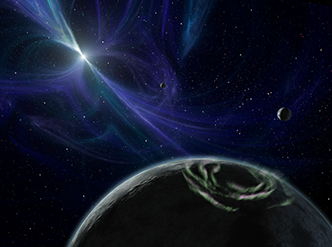
Hunting for exoplanets
The possibility of worlds beyond our own has fascinated people for millennia. Now technology is bringing these other worlds – or exoplanets –…

This article was adapted from an ESO blog post
We can’t image our home galaxy from the outside, so how do we study it? Learn how astronomers unveil the dramatic past of the Milky Way and peer into its future.
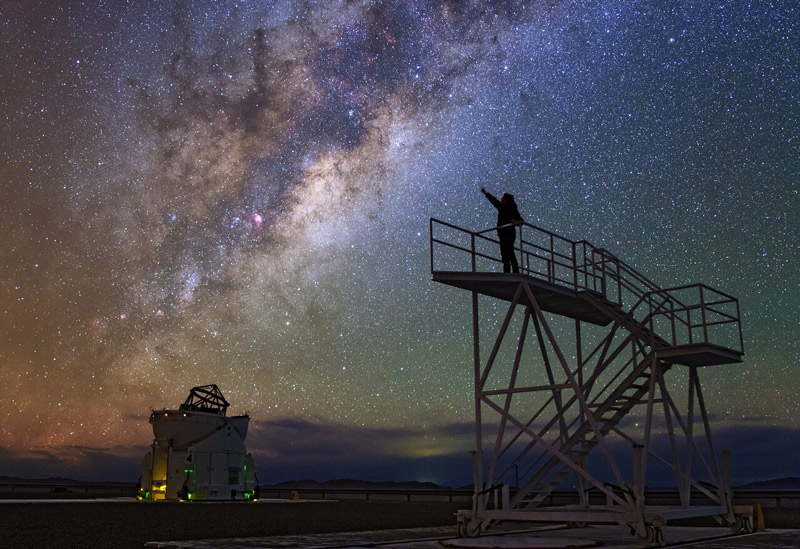
How do we study the galaxy we live in? It’s a bit like being asked to draw a map of your city without being able to leave your house. You might be able to peer through the windows and see some features like streets and tall buildings, but most will be hidden by nearby houses. In fact, humanity has already managed to take a step away from Earth, but the dimensions of the Milky Way are enormous. Voyager 1, the most distant human-made object, has been travelling for 45 years and is now more than 20 billion kilometres away. Still, that’s pretty much next door in galactic terms: you would need to be several million times further away to get a clear view of the Milky Way from the outside.
One of the first ever attempts to make a map of the Milky Way was in 1785 by the astronomers, and siblings, Caroline and William Herschel. By counting the stars they could see in the night sky, they drew a picture of the Milky Way that had not much in common with the models of our galaxy we know today.
There are two major problems astronomers have to overcome to get a better picture of the Milky Way: the distances to the 200 billion stars and their properties must be known, and the dark dust clouds that obstruct our view have to be cleared. Distance measurements for objects beyond the solar system were impossible before the second half of the 19th century. With the development of better telescopes and the application of photography to astronomical observations, charting of the sky improved rapidly.
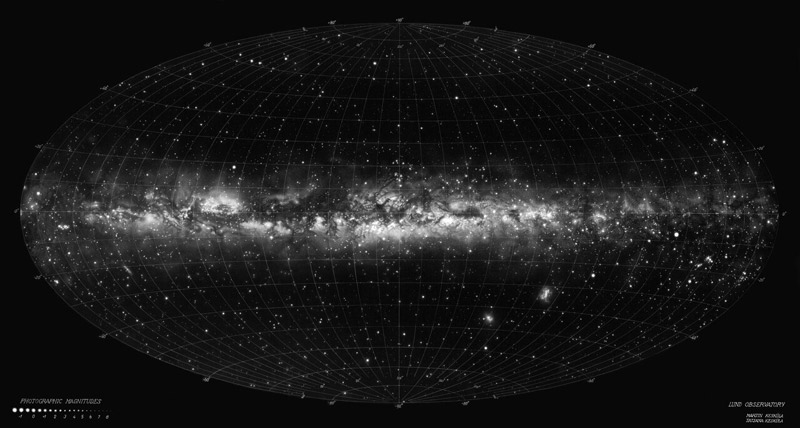
A giant leap forward in mapping the Milky Way came in the early 1990s when Lennart Lindegren, together with Michael Perryman and the European Space Agency (ESA), proposed the Gaia space telescope mission. Launched in 2013, the Gaia telescope has provided invaluable information about the appearance of our galaxy.[1,2]
Gaia has so far mapped the positions and velocities of almost 2 billion stars in the Milky Way, which is still only 1% of all stars in the galaxy. This allows astronomers to trace the structures of the Milky Way and model the motions of the stars into the past as well as into the future. But how can we measure the distance to a star? This is done by observing how the star appears to move with respect to background stars as Earth orbits the Sun (stellar parallax). You can observe a parallax effect yourself by holding your finger in front of your face: first close one eye, and then switch. Notice how your finger seems to move with respect to the background. If you move your finger further away, it will appear to move less, that is, the angle is smaller. For the stars, we can use the same principle, but instead of having our two eyes, we now use Earth’s orbit around the Sun as our two viewing points. Using the angle of the apparent shift and the distance between the Sun and Earth, the distance to the star can be measured.
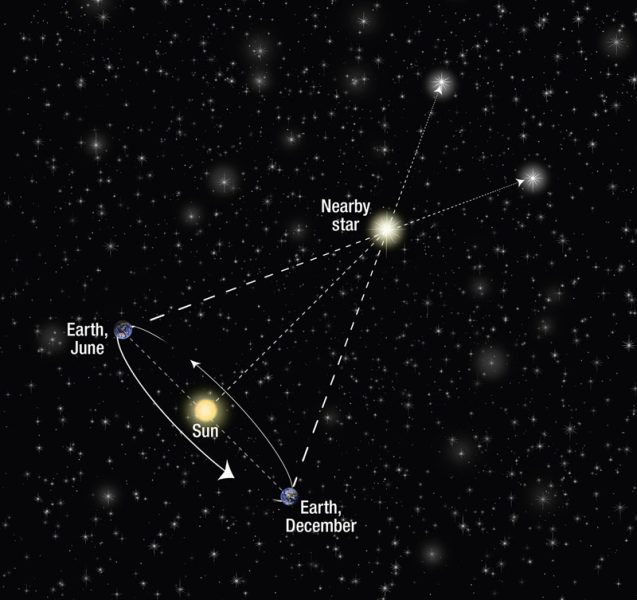
Gaia provides not only distance information but also clues about the development and therefore the history of stars. Galactic archaeologists study the history of our galaxy and the stars are their fossils. For studying these fossils in detail, the telescopes of the European Southern Observatory (ESO) record the chemical fingerprint of the stars using spectroscopy. The Gaia-ESO survey uses ESO’s facilities to obtain the chemical information of stars tracked by Gaia, with the goal of further unravelling the mystery of the Milky Way.[3]
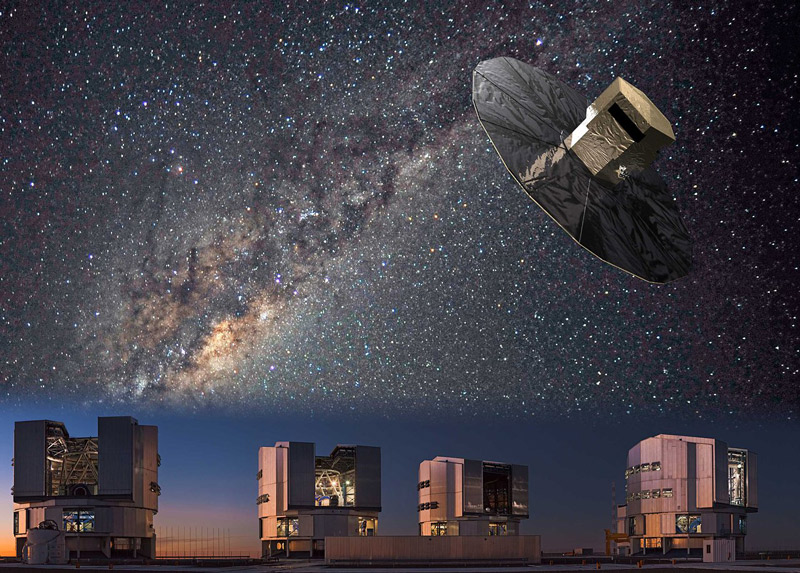
In simplified terms, to build a galaxy, we first need gas and dark matter. Thanks to gravity, the gas will collapse into stars, which are gravitationally bound and swirl together creating a galaxy. Over time, the galaxy will change and evolve, partly due to the evolution of the stars themselves. During their lifetime, stars fuse hydrogen and helium into heavier elements and also produce dust. These substances are then expelled into the surrounding gas. Subsequent generations of stars that form out of that enriched gas will incorporate those heavy elements into their composition. By studying the chemical fingerprints of the stars, we can then distinguish their different generations. The distribution, evolution, and movement of the stars in our galaxy led to the Milky Way being a spiral galaxy, with a disc that has well-defined spiral arms and a puffed-up region in the middle called the bulge. The disc and bulge are embedded in a halo that contains globular stellar clusters and dark matter. However, this is a very broad and simplified description of our home galaxy.
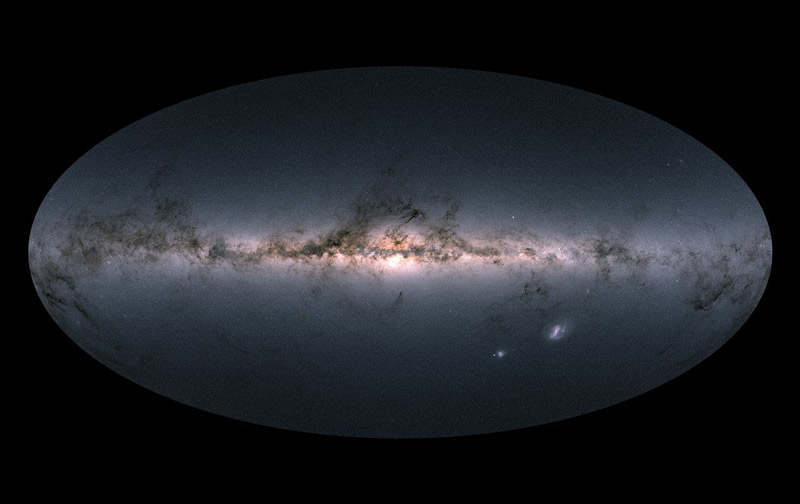
By studying the motion and chemical makeup of stars in the Milky Way, astronomers found the scattered remains of an old engulfed galaxy[4] that had been torn to pieces several billion years ago, as well as some remnants of several digested galaxies in the halo of the Milky Way.
However, that’s not the end of the Milky Way’s hectic history. Actually, our galaxy is in the process of engulfing another galaxy right now: the dwarf galaxy Sagittarius. The Sagittarius galaxy has passed through into our galaxy several times, slowly being torn apart by the gravity of the Milky Way. Just like throwing a rock in water, the repeated plunges of Sagittarius into the Milky Way have created ripples in the overall disc of the Milky Way, which can be seen by Gaia.[5]
Fast forward four billion years into the future, and it is anticipated that the Milky Way and its closest large neighbour, the Andromeda galaxy, will merge to create a new galaxy.[6] Yet again, our galaxy will be reshaped.
So, have we obtained our final map of the Milky Way? Well, we are getting there! One problem is that our view towards the centre of the milky way is covered with dust clouds blocking the light. But thanks to infrared and radio detectors, it is possible to peer through the dust. These detectors have allowed us to take an image of Sagittarius A*, the supermassive black hole at the centre of our galaxy, and determine that its mass is equal to 4 billion Suns.[7]
In the future Gaia will be joined by instruments newly installed at ESO’s telescopes that capture infrared and visible spectra of over 1000 objects at the same time, allowing astronomers to obtain the chemical fingerprints of millions of stars. Together with Gaia, these new instruments will dig out many of the secrets that the Milky Way still holds, so that one day we may have a complete map of our galaxy.
[1] The Gaia mission page on the ESA website: https://www.esa.int/Science_Exploration/Space_Science/Gaia
[2] The collaboration between ESO and ESA: https://www.eso.org/public/blog/how-eso-collaborates-with-esa/
[3] How ESO is collaborating on the Gaia mission: https://www.eso.org/public/blog/it-is-full-of-stars/
[4] Feuille DK et al. (2022) An Old, Metal-rich Accreted Stellar Component in the Milky Way Stellar Disk. The Astrophysical Journal 934: 21. doi: 10.3847/1538-4357/ac76ba
[5] An article on the Gaia mission’s results on the ESA website: https://www.esa.int/Science_Exploration/Space_Science/Gaia/Gaia_hints_at_our_Galaxy_s_turbulent_life
[6] An article on the Milky Way’s destiny on the NASA website https://www.nasa.gov/mission_pages/hubble/science/milky-way-collide.html
[7] Stars move around the Milky Way’s supermassive black hole in these ESO images https://www.eso.org/public/news/eso2119/

The possibility of worlds beyond our own has fascinated people for millennia. Now technology is bringing these other worlds – or exoplanets –…
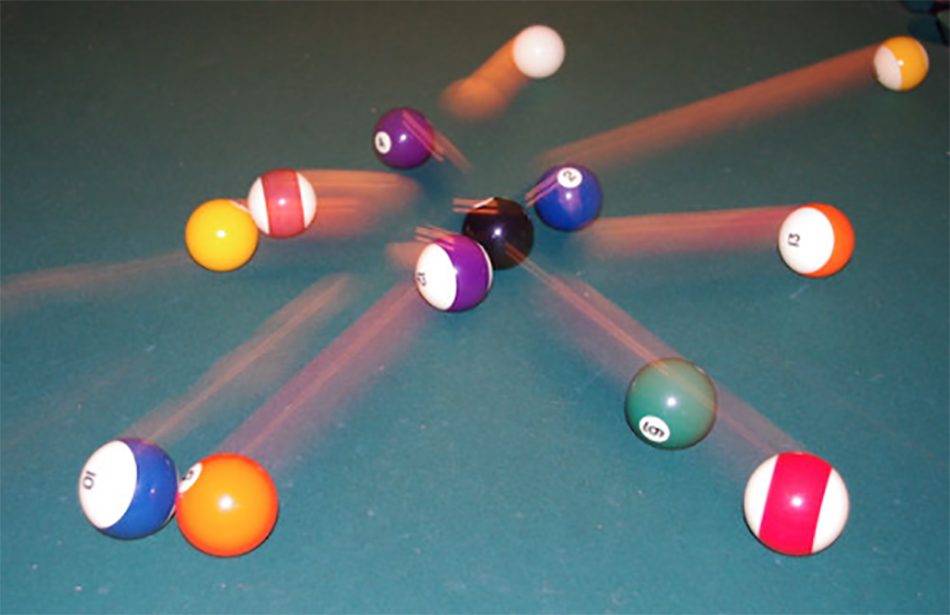
How do physicists study very small objects (like molecules, atoms, and subatomic particles) and very large objects (such as galaxies) that cannot be…
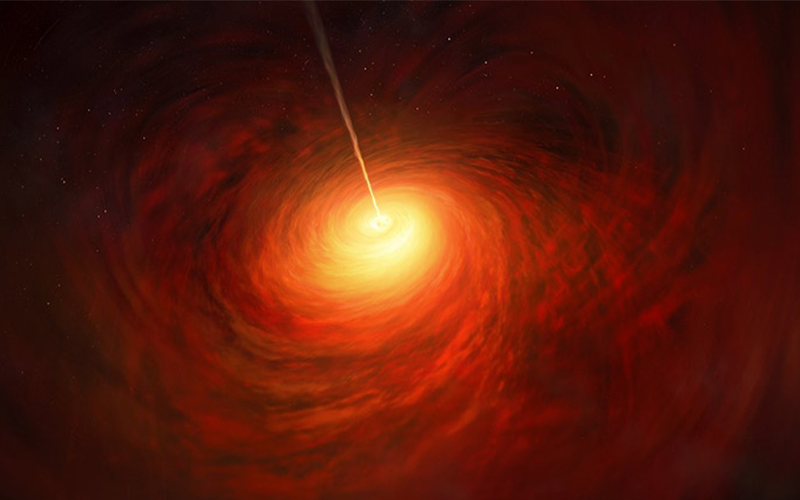
This is the story of how scientists created an image of the region around the black hole at the centre of our galaxy by combining many telescopes into one virtual telescope the size of the Earth.